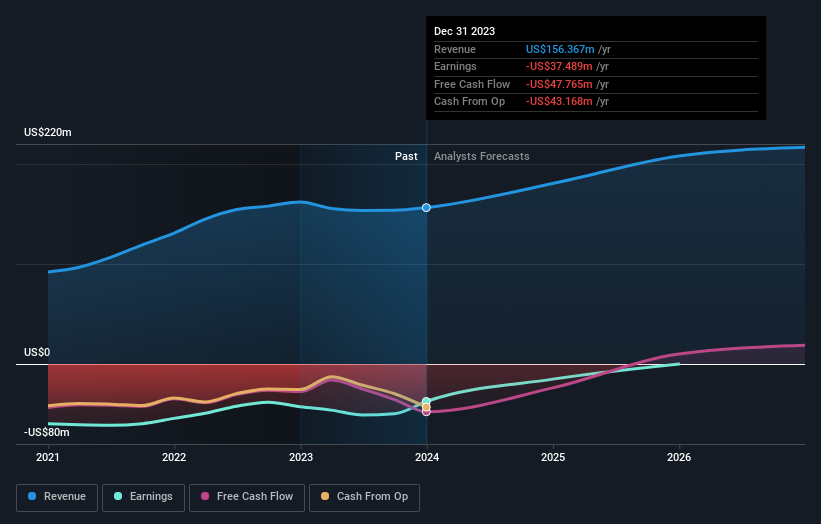Earnings Release: Here's Why Analysts Cut Their Cerus Corporation (NASDAQ:CERS) Price Target To US$4.13
It's been a good week for Cerus Corporation (NASDAQ:CERS) shareholders, because the company has just released its latest full-year results, and the shares gained 9.2% to US$2.38. It wasn't the greatest result, with ongoing losses and revenues of US$156m falling short of analyst predictions. The losses were a relative bright spot though, with a per-share statutory loss of US$0.21 being moderately smaller than the analysts forecast. This is an important time for investors, as they can track a company's performance in its report, look at what experts are forecasting for next year, and see if there has been any change to expectations for the business. So we gathered the latest post-earnings forecasts to see what estimates suggest is in store for next year.
See our latest analysis for Cerus
Taking into account the latest results, the most recent consensus for Cerus from four analysts is for revenues of US$180.4m in 2024. If met, it would imply a solid 15% increase on its revenue over the past 12 months. The loss per share is expected to greatly reduce in the near future, narrowing 59% to US$0.085. Yet prior to the latest earnings, the analysts had been forecasting revenues of US$188.6m and losses of US$0.12 per share in 2024. While the revenue estimates fell, sentiment seems to have improved, with the analysts making a very promising decrease in losses per share in particular.
The consensus price target fell 27% to US$4.13, with the dip in revenue estimates clearly souring sentiment, despite the forecast reduction in losses. Fixating on a single price target can be unwise though, since the consensus target is effectively the average of analyst price targets. As a result, some investors like to look at the range of estimates to see if there are any diverging opinions on the company's valuation. There are some variant perceptions on Cerus, with the most bullish analyst valuing it at US$6.00 and the most bearish at US$2.50 per share. Note the wide gap in analyst price targets? This implies to us that there is a fairly broad range of possible scenarios for the underlying business.
One way to get more context on these forecasts is to look at how they compare to both past performance, and how other companies in the same industry are performing. We would highlight that Cerus' revenue growth is expected to slow, with the forecast 15% annualised growth rate until the end of 2024 being well below the historical 21% p.a. growth over the last five years. Juxtapose this against the other companies in the industry with analyst coverage, which are forecast to grow their revenues (in aggregate) 7.8% per year. So it's pretty clear that, while Cerus' revenue growth is expected to slow, it's still expected to grow faster than the industry itself.
The Bottom Line
The most obvious conclusion is that the analysts made no changes to their forecasts for a loss next year. Regrettably, they also downgraded their revenue estimates, but the latest forecasts still imply the business will grow faster than the wider industry. Even so, earnings are more important to the intrinsic value of the business. The consensus price target fell measurably, with the analysts seemingly not reassured by the latest results, leading to a lower estimate of Cerus' future valuation.
Keeping that in mind, we still think that the longer term trajectory of the business is much more important for investors to consider. At Simply Wall St, we have a full range of analyst estimates for Cerus going out to 2026, and you can see them free on our platform here..
And what about risks? Every company has them, and we've spotted 3 warning signs for Cerus you should know about.
Have feedback on this article? Concerned about the content? Get in touch with us directly. Alternatively, email editorial-team (at) simplywallst.com.
This article by Simply Wall St is general in nature. We provide commentary based on historical data and analyst forecasts only using an unbiased methodology and our articles are not intended to be financial advice. It does not constitute a recommendation to buy or sell any stock, and does not take account of your objectives, or your financial situation. We aim to bring you long-term focused analysis driven by fundamental data. Note that our analysis may not factor in the latest price-sensitive company announcements or qualitative material. Simply Wall St has no position in any stocks mentioned.

